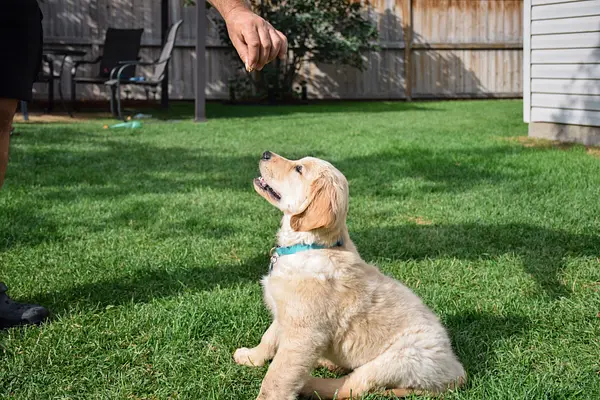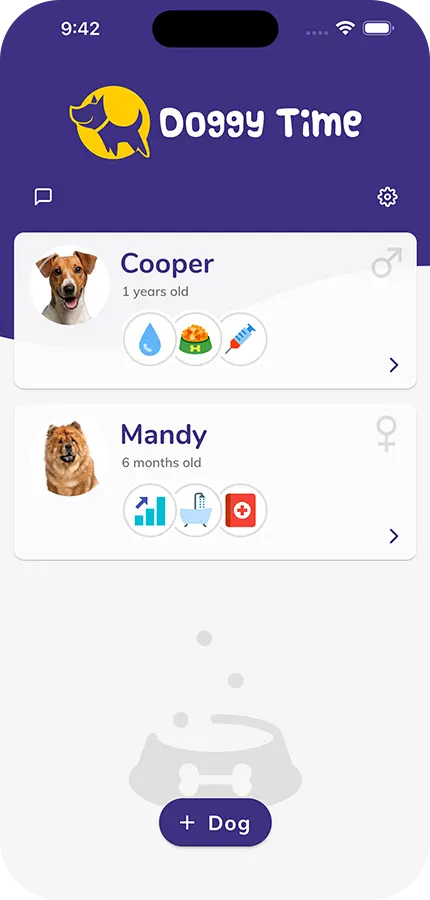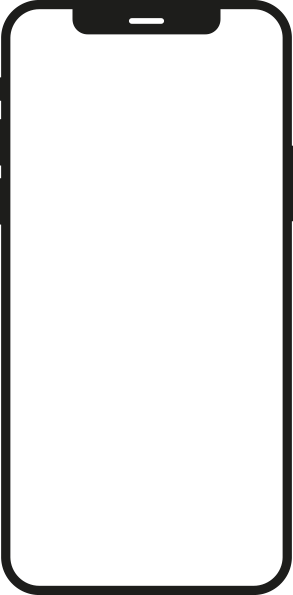Bringing home a new puppy is one of life's most joyful experiences, but it can also feel overwhelming! Those tiny paws come with big responsibilities, and establishing good habits early makes all the difference. In this guide, I'll walk you through a practical week-by-week training schedule for your puppy's first month home. With consistency, patience, and lots of love, you'll build a foundation for a well-mannered, happy canine companion.
Week 1: Welcome Home, Little One!
Focus areas: Settling in, potty training basics, gentle handling
Your puppy's first week is all about adjustment. Everything is new and potentially scary for your little one, so focus on creating safety and routine.
Daily priorities: - Potty breaks every 1-2 hours - Take your puppy to their designated potty area first thing in the morning, after meals, after naps, and before bedtime. Praise enthusiastically when they go in the right spot! - Crate introduction - Make the crate a happy place with treats, meals, and cozy bedding. Start with short periods and gradually increase time. - Gentle handling - Spend time softly touching your puppy's paws, ears, and mouth. This builds trust and makes future grooming and vet visits easier. - Name recognition - Say your puppy's name and reward them with treats and praise when they look at you.
Keep it simple: This week isn't about formal training but building trust. Your puppy needs to learn that you're their safe person and that their new home is a good place to be.
Week 2: Building Basic Communication
Focus areas: Continued potty training, basic commands, socialization beginnings
Now that your puppy is getting comfortable, you can start introducing some structure.
Daily priorities: - "Sit" command - Hold a treat above your puppy's nose and move it back over their head. As their bottom touches the ground, say "sit" and reward immediately. - Leash introduction - Let your puppy wear their collar/harness and leash for short periods inside the house, making it a positive experience with treats and play. - Handling exercises - Continue gentle handling, adding in brief tooth brushing and brushing sessions. - Controlled exposure - Introduce your puppy to different surfaces (carpet, tile, grass), sounds, and household objects.
Training tip: Keep sessions super short (3-5 minutes) and always end on a positive note. Multiple mini-sessions throughout the day are better than one long session.
Week 3: Expanding Their World
Focus areas: New commands, leash skills, socialization progress
Your puppy is gaining confidence and can handle more structured training now.
Daily priorities: - "Come" command - In a low-distraction environment, say your puppy's name followed by "come," then back up and encourage them to come to you. Reward generously when they do! - "Down" command - From the sit position, hold a treat and lower it to the ground. When your puppy follows and lies down, mark with "down" and reward. - Leash walking practice - Start in your home or yard with short, positive walking experiences. - Socialization - If your vet approves, arrange controlled meet-ups with fully vaccinated, puppy-friendly dogs. Expose your puppy (from a safe distance) to different people, sounds, and sights.
Consistency matters: Everyone in the household should use the same commands and reward systems to avoid confusing your puppy.
Week 4: Polishing and Progressing
Focus areas: Reinforcing learned skills, introducing impulse control, expanding socialization
By now, your puppy has a foundation to build upon. This week is about strengthening what they've learned and adding some complexity.
Daily priorities: - "Stay" command - Start with your puppy in a sit, say "stay" with a flat palm signal, take one step back, then immediately return and reward. Gradually increase distance and duration. - "Leave it" basics - Place a treat in your closed hand, let your puppy sniff and paw. When they back away, say "leave it" and reward with a DIFFERENT treat from your other hand. - Handling and grooming - Continue regular handling sessions, adding in more thorough brushing and nail inspection. - Alone time practice - Help your puppy learn that short separations are okay. Practice leaving them in their crate or a puppy-proofed area for brief periods.
Celebrate progress: Remember that puppies, like human babies, develop at different rates. Celebrate small victories and don't worry if your puppy isn't mastering everything right away.
Beyond the First Month
Congratulations on making it through the first month! You've laid a crucial foundation, but puppy development is ongoing. Continue building on these basics, gradually increasing the difficulty level and adding distractions. Consider enrolling in a positive-reinforcement puppy class for professional guidance and socialization opportunities.
Remember that adolescence (typically 6-18 months) brings new challenges as your puppy tests boundaries. Stay consistent with your training and expectations, and you'll navigate this phase successfully too!
Tracking Your Puppy's Progress
Keeping track of your puppy's training milestones, potty habits, and daily activities can be incredibly helpful. The Doggy Time app makes this easy by allowing you to log puppy training activities, set smart reminders for potty breaks and feedings, and even coordinate care with family members or dog walkers. With features like puppy potty logging, training schedules, and health tracking all in one place, it's like having a puppy training assistant in your pocket!
Disclaimer: The information provided in this blog post is meant for educational purposes only and is not a substitute for professional veterinary advice. Always consult with your veterinarian about your puppy's specific health needs, vaccination schedule, and appropriate socialization timeline based on their health status.






